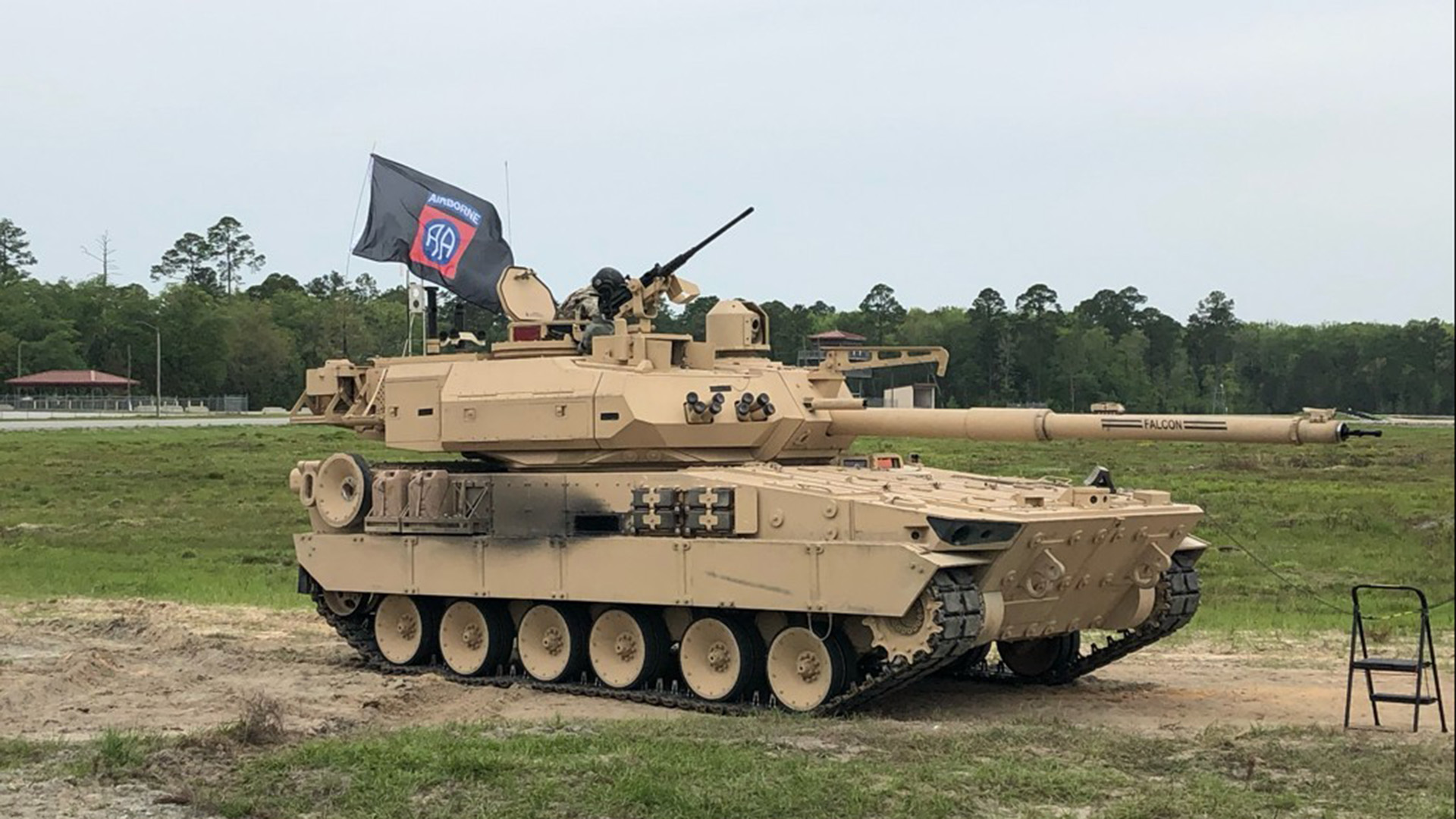

The Army’s Mobile Protected Firepower vehicles are in many ways smaller, lighter versions of the service’s M1 Abrams main battle tanks, and are designed to give light infantry and airborne units more muscle in combat.
“Light infantry, as you know, has only got so much firepower,” Army Gen. Mark Milley, chairman of the Joint Chiefs of Staff, told Task & Purpose. “So, you gotta give them something to be able to shoot, move, and communicate and protect themselves — protect our soldiers so they don’t get killed on a battlefield.”
Milley talked to Task & Purpose at Saturday’s Army-Navy football game in Philadelphia about how the Army needs to have a vehicle that is light enough to be flown into combat zones to support infantry units.
M1 Abrams main battle tanks, which weigh 70 tons, are so heavy that they are usually sent to Europe, South Korea, and elsewhere by ship, and that takes about two weeks, not including the time to get the tanks on and off ships, Milley said.
“One of the things we decided we needed to do was to upgrade our armor systems for light infantry and also for deployability, and that’s where Mobile Protected Firepower comes out,” Milley said. “It’s a light enough vehicle, rapidly deployable, it can project power with airborne or light infantry forces.”
Subscribe to Task & Purpose Today. Get the latest military news, entertainment, and gear in your inbox daily.
At 38 tons, MPF vehicles are designed to be light enough so that two can fit on an Air Force C-17 Globemaster transport aircraft.

That means two C-17 transport aircraft can transport a platoon of MPF vehicles to provide rapid support for Army units such as the 101st Airborne Division (Air Assault), 82nd Airborne Division, 10th Mountain Division, and 25th Infantry Division said Milley, who added that MPF vehicles feature a 105 mm main gun that has “enough punch” to destroy enemy armored vehicles.
It has been 25 years since the Army retired its last M551 Sheridan light tanks, which weighed only 17 tons, so they could be flown in an Air Force C-130 transport plane or airdropped to support airborne units. Initially, the Army tried to replace its Sheridan tanks with the Stryker Mobile Gun System, but the service abandoned that program in May 2021.
In June, the Army awarded General Dynamics a $1.14 billion contract to build and field the first 96 Mobile Protected Firepower vehicles. Army units are expected to receive the first vehicles in late fiscal 2025.
MPF vehicles share many commonalities with the larger M1 Abrams main battle tanks. Both are built by General Dynamics and are configured to have three crew members in the body and one in the turret.
The vehicles are so similar that Abrams tank crew members can be trained to learn how to operate an MPF vehicle very quickly, said Army Lt. Col. Peter George, product manager for Mobile Protected Firepower.
“One of the benefits of this platform is it’s incredibly common with the Abrams,” said George, who also spoke to Task & Purpose at Saturday’s Army-Navy Game. “You take a 19K tank crewman; you train them on an Abrams, you get them set on an Abrams, and then you do a short transition where they can pick this vehicle up, move into the formation, and then work that teaming with infantry soldiers. “
Right now, the Army’s plan is that soldiers who operate MPF vehicles will attend the U.S. Army Armor School at Fort Benning Georgia to train in the same Military Occupational Specialty as M1 Abrams crews, George told Task & Purpose in a follow-up email.
But MPF vehicles are not exactly miniature versions of M1 Abrams main battle tanks, George said via email. One key difference is that MPF vehicles are not designed to get into battles with main battle tanks, George said. The vehicles’ 105mm gun is meant to destroy enemy bunkers and other fortifications as well as other similarly armored vehicles.
“It has a different mission profile and won’t officially be called a tank in its vehicle nomenclature,” George said. “It is an asset to assist the infantry with increased direct firepower to complete their assigned mission.”
Task & Purpose Deputy Editor James Clark contributed reporting for this story.
The latest on Task & Purpose
- Air National Guard colonel suspended following investigation
- The Navy will now enlist recruits who score 10 on their ASVAB
- The Army has selected the V-280 Valor to replace its Black Hawk fleet
- Five soldiers with the 10th Mountain Division arrested for rape
- Old Air Force A-10 Warthog learns new trick: Covering fire for B-1B bombers
Want to write for Task & Purpose? Click here. Or check out the latest stories on our homepage.